by Diane Gold on March 7, 2017.
Today’s issue, as most of them are, focuses on habit change. How about that one step technique!
Also in this issue….
by Diane Gold on Otober 18, 2016.
Today’s issue focuses on getting rid of nausea, a technique I rediscovered by accident.
Also in this issue….
by Diane Gold on August 30, 2016.
Today’s issue focuses on using the one step technique for imperfect health. I get personal.
Also in this issue….
by Diane Gold on August 2, 2016.
This article focuses on conflict resolution education and how we need it as early as our first days in school.
Also in this issue….
by Diane Gold on May 31, 2016.
Today’s issue focuses on stress relief and the amazing impact focus has on it.
Also in this issue….
by Diane Gold on April 26, 2016.
Today’s issue focuses on Eastern And Western Medicine and the HOLE between them that exists because of lack of integration – and how to fix it.
Also in this issue….
by Diane Gold on March 15, 2016.
Today’s issue focuses on the myth of meditation and my very small but important secret to replace the myth with rock solid evidence. I am proud to share it.
Also in this issue….
by Diane Gold on January 19, 2016.
It’s Diane Gold. I wanted to say hello one last time This may be my last mag, although I hope to write when I can.
Also in this issue….
by Diane Gold on December 22, 2015.
Our main essay is about sexual rights and how being forced is a violation of human rights.
Also in this issue….
by Diane Gold on December 15, 2015.
Our main essay talks about supply chain transparency. Most of the time, we don’t think about what goes into a product we use. Kudos to California for having a required disclosure of awareness.
Also in this issue….
by Diane Gold on November 24, 2015.
Our main essay talks about my favorite subject, being at peace, being on a road of peace. I have written on this subject to commemorate our 200th Issue.
Also in this issue….
by Diane Gold on November 17, 2015.
Our main essay talks about belief systems and the habits we form and can reform along the way.
Also in this issue….
by Diane Gold on November 10, 2015.
Our main essay gives the secret of Vitamin D, our habits and the action steps that help us help ourselves.
Also in this issue….
by Diane Gold on October 27, 2015.
Our main essay talks about food habits and gives action steps that help us make them what’s best for us.
Also in this issue….
by Diane Gold on October 13, 2015.
Our main essay talks about recycling, why we do it and whose responsibility it is.
Also in this issue….
by Diane Gold on October 6, 2015.
Our main essay talks about the term “conventional produce” and how it blinds us to the GMOs that are commonly included in this category.
Also in this issue….
by Diane Gold on September 29, 2015.
Our main essay talks about people who are the abuser and why we abuse.
Also in this issue….
by Diane Gold on September 22, 2015.
Our main essay talks about those of us who are abused at home and why some of us do not remove ourselves from the situation.
Also in this issue….
by Diane Gold on September 15, 2015.
Our main essay talks about good food and gives food for thought to the reader.
Also in this issue….
by Diane Gold on March 24, 2015.
Our main essay talks about the biggest of health care mistakes and includes a what if scenario to get us thinking.
Also in this issue….
by Diane Gold on March 17, 2015.
Our main essay talks about water shortage and why we are involved, no matter how much water we have.
Also in this issue….
by Diane Gold on March 10, 2015.
Our main essay talks about learning how to learn, the mistake we make by not teaching the process as soon as we start school.
Also in this issue….
by Diane Gold on March 3, 2015.
Our main essay talks about balance in our lives, which comes from a systematic approach to living.
Also in this issue….
by Diane Gold on February 17, 2015.
Our main essay talks about plastics in food and inside our blood.
Also in this issue….
by Diane Gold on February 3, 2015.
Our main essay talks about what happens to olive oil when it gets too hot. We also take a look at the qualifications of people who give the answers.
Also in this issue….
by Diane Gold on January 27, 2015.
Our main essay talks about who pays for the land, oceans, soil, water that we overuse to produce food and the species we endanger or wipe out in the process. It applies to all people who eat.
Also in this issue….
by Diane Gold on January 20, 2015.
Our main essay talks about 6 ways to get productive and be gloriously happy while producing.
Also in this issue….
by Diane Gold on January 6, 2015.
Our main essay talks about how everything we do is making a difference. The author lists what’s possible and mentions food labeling, wearing sustainable clothing, as well as topics important to her.
Also in this issue….
by Diane Gold on December 23, 2014.
Our main essay talks about the new year’s resolution and how to get it done.
Also in this issue….
by Diane Gold on December 16, 2014.
Our main essay talks about the long awaited book by Diane Gold, The Airplane Workout, which helps in-flight clots and talks about how to prevent them, including one sample exercise from the book for your next flight.
Also in this issue….
by Diane Gold on December 9, 2014.
Our main essay talks about the secret of habit change, which is to step, make that move, do.
Also in this issue….
by Diane Gold on December 2, 2014.
Our main essay talks about what causes our urges and a simple behavior change strategy.
Also in this issue….
by Diane Gold on November 18, 2014.
Our discussion today is to announce our water campaign. Together, we can build 1 single well that can provide for 500-1,000 people with 10 years of water. Please take a minute to ponder this one. Anyone who donates can have…at no charge.
Also in this issue….
by Diane Gold on November 4, 2014.
Our main essay talks about 10 things that may not suck in the life of someone who thinks life sucks.
Also in this issue….
by Diane Gold on October 28, 2014.
Our main essay talks about whether we choose to be material and pursue money in the hierarchical system or if we decide to focus on a life of freedom that works on spiritual benefits first.
Also in this issue….
by Diane Gold on October 21, 2014.
Our main essay talks about our food habit of not asking the right question. Easier than we think!
Also in this issue….
by Diane Gold on October 14, 2014.
Our main essay talks about how to replace a habit. Easier than we think, even if it’s been excruciating in the past!
Also in this issue….
by Diane Gold on October 7, 2014.
Our main essay talks about composting and how to proceed successfully.
Also in this issue….
by Diane Gold on September 23, 2014.
Our main essay talks about knowing what’s on our fruits and vegetables with some surprising information about what the National Organic Program allows.
Also in this issue….
by Diane Gold on September 16, 2014.
Our main essay talks about nutrient composition, the percentage of fats, proteins and carbohydrates that T. Colin Campbell, grand nutritionist, has discovered is the correct balance.
Also in this issue….
by Diane Gold on September 2, 2014.
Our main essay talks about recognizing depression and how we each can be aware if the signs in ourselves or others.
Also in this issue….
by Diane Gold on August 26, 2014.
Our main essay talks about our habit of resolving aggression with aggression and how looking through the other person’s eyes is one way to get perspective.
Also in this issue….
by Diane Gold on August 19, 2014.
Our main essay talks about the habit of meditation and what it truly does for us.
Also in this issue….
by Diane Gold on August 12, 2014.
Our main essay talks about how, sometimes, our inflated ego can be cruel in order to cover up our own insecurities.
Also in this issue….
by Diane Gold on August 5, 2014.
Our main essay talks about how prejudice is a habit and how that habit can be replaced with a new and more useful one.
Also in this issue….
by Diane Gold on July 22, 2014.
Our main essay focuses on a “what if” scenario. “What if” the largest multinational companies’ missions were to benefit the world’s poor with food, water, clothing, housing, health care! This article suggests a possible model for this to happen. It also offers food for thought to encourage us to innovate the solution for ourselves.on patient’s rights and how our accepting doctor’s orders is not in our best interest until we’ve researched options and been given choices.
Also in this issue….
by Diane Gold on July 15, 2014.
Our main essay focuses on patient rights and how our accepting doctor’s orders is not in our best interest until we’ve researched options and been given choices.
Also in this issue….
by Diane Gold on July 1, 2014. Our main essay talks about trusting media and the mistakes we make by not recognizing relationships that deter most media companies and their employees from reporting the truth, the whole truth and nothing but the truth. Also in this issue….
by Diane Gold on June 24, 2014. Our main essay talks about making profit from peace, rather than war, and proposes a competition based TV show to generate investors. Also in this issue….
by Diane Gold on May 27, 2014. Our main essay is about taking action toward protecting our food supply from genetic modified organisms (GMOs). Also in this issue….
by Diane Gold on May 20, 2014. Our main essay is about integrative medicine and the possibilities of its being the standard way. Also in this issue….
by Diane Gold on May 13, 2014. Our main essay talks about the concept of an eye for an eye and some action steps to change the penal system for non-violent offenders. Also in this issue….
by Diane Gold on Apr. 22, 2014. Our main essay is about how exercise can rejuvenate the skin. It includes comment about injectable face fillers. Also in this issue….
by Diane Gold on Apr. 15, 2014. Our main essay is about workout burnout and how doing tai chi avoids it. Also in this issue….
by Diane Gold on Apr. 8, 2014. Our main essay was written by Anahad O’Connor, our expert from The New York Times, and edited by the publisher. It is research about vitamin D and disease. Also in this issue….
by Diane Gold on Apr. 1, 2014. Our main essay is about many of the conflicts of interest that cause some of the fractures in our health care system and how we are NOT doomed. Also in this issue….
by Diane Gold on Mar. 25, 2014. Our main essay is one of my favorites. It’s about cultivating peaceful methods to resolve conflict and how our actions may affect the future of peace. Also in this issue….
by Diane Gold on Mar. 18, 2014. This week’s main essay is about how slouching really destroys our health. Who knew? Also in this issue….
by Diane Gold on Mar. 11, 2014. Our main essay is about the habit of eating meat and what consequences come from that. Also in this issue….
by Diane Gold on Feb. 25, 2014. Our main essay talks about the the term “quitting” as it applies to habit change. Also in this issue….
by Diane Gold on Feb. 18, 2014. Our main essay talks about the health care law and how it may cause people to work less as W-2 employees. Also in this issue….
by Diane Gold on Feb. 11, 2014. Our essay delivers the simplest, universal formula for how to change a habit. This was inspired by my talk at the Women Referring Women luncheon. Also in this issue….
by Diane Gold on February 4, 2014. Our main essay shares many of the ways in which evidence-based medicine can be manipulated. (It also thanks those who are honest and noble in the industry.) Also in this issue….
by Diane Gold on Jan. 28, 2014. Our main essay talks about the United States is not number one in healthy eating and why. Also in this issue….
by Diane Gold on Jan. 21, 2014. Our main essay talks about habit change mistakes. We all tend to make them when we don’t ground ourselves first. Also in this issue….
by Diane Gold on Jan. 7, 2014. This week, our main essay talks about personal development and how it can change the world. Also in this issue….
by Diane Gold on Dec. 31, 2013. Our Happy New Year main essay is about habit change and New Year’s resolution and, of course, success. Also in this issue….
by Diane Gold on Dec. 24, 2013. This week, our main essay talks about developing the habit of forgiveness and how to go about it even when it seems impossible. Also in this issue….
by Diane Gold on Dec. 17, 2013. This week, our main essay talks about how we complain, exclusive of solving, and the importance of solutions. Also in this issue….
by Diane Gold on Dec. 10, 2013. This week, our main essay is a less than one minute exercise, in itself, along with an explanation about how to avoid injury during training. Also in this issue….
by Diane Gold on Dec. 3, 2013. This week, our main essay talks about clinical trials that are not reported. We rarely question this since we are in the habit of not questioning what doctors or medical professionals say. Also in this issue….
by Diane Gold on Nov. 26, 2013. This week, our main essay talks about being an enabler, someone so wrapped up in a user’s behavior, it’s bad news for both people. Also in this issue….
by Diane Gold on Nov. 19, 2013. This week, our main essay talks about how, through learning how to maintain our habitual behavior, we develop very valuable skills that are beneficial to us and to the world. Also in this issue….
by Diane Gold on Nov. 12, 2013. This week, our main essay talks about pesticides and includes two consumer guides to buying produce with the least amount of residue. Also in this issue….
by Diane Gold on Nov. 5, 2013. This week, our main essay gives 6 valid reasons to consider plant-based nutrition. Also in this issue….
by Diane Gold on Oct. 29, 2013. This week, our main essay talks about sugar and whether it is good for our health. Also in this issue….
by Diane Gold on Oct. 22, 2013. This week we are publishing our 100th Issue, which means we are celebrating our Second Anniversary. Therefore, we have a special main essay which is a list of 100 things that may make us feel gratitude. Also in this issue….
by Diane Gold on Oct. 14, 2013. This week, our main essay offers three habit changes that turn sickness into health. Also in this issue….
by Diane Gold on Oct. 7, 2013. This week, we bring you our main essay about groups that influence habit change and what’s missing from many of them. Also in this issue….
by Diane Gold on Sept. 30, 2013. This week, we bring you the one secret to habit change. Also in this issue….
by Diane Gold on Sept. 23, 2013. This week, we bring you THE mistakes of habit change that seem universal to humans. From these come the commandments to change a habit. Also in this issue…
by Diane Gold on Sept. 9, 2013. This week, our main article focuses on a study about gut microorganisms as a possible technique for weight loss. Also in this issue…
by Diane Gold on Sept. 2, 2013. This week, our main article focuses on our ability to temper our forgiveness and our revenge. Also in this issue…
by Diane Gold on Aug. 26, 2013. This week, our main article focuses on how the significance of how we achieve happiness is detected and processed by our genes to our benefit or our detriment. Also in this issue…
by Diane Gold on Aug. 19, 2013. This week, our main article focuses on food and supplement labels and how we form habits as a result. Also in this issue…
by Diane Gold on Aug. 12, 2013. This week, our main article focuses on the idea that we are habit masters from all the training we have given ourselves with various life behaviors. There are 12 proposed action steps. Also in this issue…
by Diane Gold on Aug. 5, 2013. This week, our main article talks about the cost of health care. There are 11 possible action steps. Also in this issue…
by Diane Gold on July 29, 2013. This week, our main article talks about personal liberation and what it means for habit change. There are 10 action steps. Also in this issue…
by Diane Gold on July 22, 2013. This week, our main article talks about this simple technique that can mean the difference between habit change and frustration. And there are simple action steps to follow. Also in this issue…
by Diane Gold on July 15, 2013. This week, our main article talks about one habit that successful people all know about. Almost anyone can learn it through our action steps, included. Also in this issue…
by Diane Gold on July 8, 2013. This week, our main article talks about some of the differences between supplements and pharmaceuticals, including a quote from Dr. Jaroslav Boublik. Also in this issue…
by Diane Gold on July 1, 2013. This week, our main article talks about taking supplements at the expense of learning to eat well. Also in this issue…
by Diane Gold on June 24, 2013. This week, our main article focuses on habits in medical care: autopaying our bills. Also in this issue…
by Diane Gold on June 17, 2013. This week, our main article focuses on THE habit of the mind: inflexibility and three scenarios to recognize. Also in this issue…
by Diane Gold on June 3, 2013. This week, our main article focuses on habits obtained regarding medical care. Also in this issue…
by Diane Gold on May 27, 2013. This week, our main article focuses on why to change a habit and how that ties to our legacy. Also in this issue…
by Diane Gold on May 20, 2013. This week, our main article focuses on changing our food habits as we have more knowledge of GMOs (genetically modified organisms) and foods that are labeled “organic.” Also in this issue…
by Diane Gold on May 13, 2013. This week, our main article focuses on education and parenting, dedicated to all of us who have nurtured someone or something in this life. Also in this issue…
by Diane Gold on May 6, 2013. This week, our main article focuses on using grades to measure success in education. Also in this issue…
by Diane Gold on Apr. 29, 2013. This week, our main article focuses on the use of the words “guru, master and mentor.” Also in this issue…
by Diane Gold on Apr. 22, 2013. This week, our main article focuses on fitness exercises and how we train them. Tai chi is first in the title in honor of World Tai Chi Day, Saturday. Also in this issue…
by Diane Gold on Apr. 15, 2013. This week, our main article focuses on the peace process formula. It is the third installment in the series. Also in this issue…
by Diane Gold on Apr. 8, 2013. This week, our main article focuses on women as slaves and how we change this habit. Also in this issue…
by Diane Gold on Apr. 1, 2013. This week, our main article focuses on tai chi and how tai chi principle can help change a habit. Also in this issue…
by Diane Gold on Mar. 25, 2013. This week, our main article is about martial arts of the mind. This article transpired as a discussion for a kung fu student who needed to understand that the physical exercises are the tools for the accomplishments of the mind. This article is a reminder of that truth. Also in this issue…
by Diane Gold on Mar. 18, 2013. This week, our main article is about how the U.S. Health Care System has led us to need to Change A Habit. Also in this issue…
by Diane Gold on Mar. 11, 2013. This week, our main article is about sprouting, with guidance from Farmer Jay of Farmer-Jay-Pure-Organics. Also in this issue…
by Diane Gold on Mar. 4, 2013. This week, our main article talks about the gender issue as it relates to women. Also in this issue…
by Diane Gold on Feb. 25, 2013. This week, our main article talks about the fact that Peace needs a bridge in order to make it real. Also in this issue…
by Diane Gold on Feb. 18, 2013. This week, we have an article about how to change a habit by realizing how much we have. Also in this issue…
by Diane Gold on Feb. 11, 2013. This week, we have an article on Timing Of Meals by Anahad O’Connor, followed by comments and action steps by me. Also in this issue…
by Diane Gold on Feb. 4, 2013. This week, we have an article about the protein myth, the fact that it’s not necessary to combine proteins to get all the amino acids in one sitting. Also in this issue…
by Diane Gold on Jan. 28, 2013. This week, we talk about Turning Habits Into Health and the 1-step at a time approach to habit change. Also in this issue…
by Diane Gold on Jan. 14, 2013. This week, we talk about how drinking water can temper food cravings habitually. We also consider that water is not in abundance for all people. Also in this issue…
by Diane Gold on Jan. 7, 2013. First issue in 2013, and we are raring to go! This week’s article talks about maximizing our food cravings so that we can be healthier. Also in this issue…
by Diane Gold on Dec. 31, 2012. This week’s article talks about plant-based nutrition and 3 weight loss factors to look for. It is in this section so that we can make habits out of the 3 factors. Also in this issue… hr noshade=”noshade” />
by Diane Gold on Dec. 24, 2012. This week’s article talks about crossroads and the ways we handle them when they come. Also in this issue…
by Diane Gold on Dec. 17, 2012. This week’s article talks about the appetite and how saving someone other than ourselves can balance our appetite. Also in this issue…
by Diane Gold on Nov. 26, 2012. This week’s main article is about using dancing for weight loss with 5 action steps from which to choose. Also in this issue…
by Diane Gold on October 15, 2012. This week’s main article is about will power for weight loss and other goals. It ends with 3 steps to jump start your will power that can really make a difference. Also in this issue…
by Diane Gold on September 17, 2012. This week’s main article is about habits and how we can examine them. We have an awesome infographic that tells the story. Also in this issue…
by Diane Gold on September 3, 2012. A few weeks ago, there was an article on Habits. Due to the enthusiastic response and in preparation for the book on the subject, this week’s main article is Anatomy Of A Habit. Also in this issue…
by Diane Gold on August 20, 2012. This week’s main article is about Changing Bad Habits. We have included access to a flowchart with a step-by-step diagram. Also in this issue…
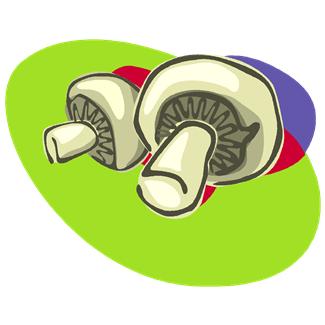
 NUTRITIONAL FACTS
NUTRITIONAL FACTS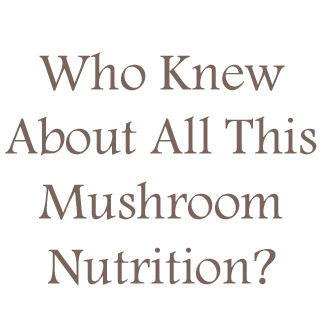 Omega-6 Fatty Acid is one of the 2 essential fatty acids required for cellular processes and must be in balance with Omega-3 Fatty Acids to keep inflammation down and cell function up. Both are essential and must be consumed. Therefore, get those walnuts and flax seeds to balance with Omega-3s.
Omega-6 Fatty Acid is one of the 2 essential fatty acids required for cellular processes and must be in balance with Omega-3 Fatty Acids to keep inflammation down and cell function up. Both are essential and must be consumed. Therefore, get those walnuts and flax seeds to balance with Omega-3s.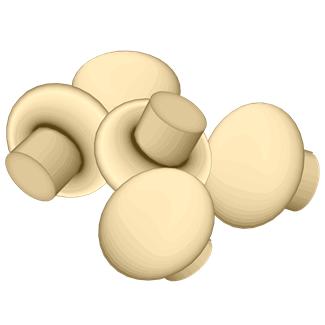 7) The last and most important benefit for the WarriorsOfWeight.com Community is that THEY MAKE US FEEL FULL AND SATISFIED while we ingest very few calories and much nutritional value.
7) The last and most important benefit for the WarriorsOfWeight.com Community is that THEY MAKE US FEEL FULL AND SATISFIED while we ingest very few calories and much nutritional value. ACTION STEPS
ACTION STEPS
 ACTION STEP BEFORE RUNNING TO EAT
ACTION STEP BEFORE RUNNING TO EAT The first 8 words of the previous sentence are probably the most common 8 words in our mind. The 9th word, in this case, pertains to weight. But anything can be put in its place. We all, at one time or other, feel that we can’t find love because of some way we are.
The first 8 words of the previous sentence are probably the most common 8 words in our mind. The 9th word, in this case, pertains to weight. But anything can be put in its place. We all, at one time or other, feel that we can’t find love because of some way we are. Of course, we know that smiling is better than frowning. It actually makes us happier, studies have shown. And smiles bring people to us; frowns, unfortunately, push people away. So what do you say to a great exercise for smiling?
Of course, we know that smiling is better than frowning. It actually makes us happier, studies have shown. And smiles bring people to us; frowns, unfortunately, push people away. So what do you say to a great exercise for smiling? 9) Doesn’t the smile make you laugh when you feel the face breaking into a smile? It does make me laugh. It is quite fascinating how the entire face changes under the skin from such a thing as a smile.
9) Doesn’t the smile make you laugh when you feel the face breaking into a smile? It does make me laugh. It is quite fascinating how the entire face changes under the skin from such a thing as a smile.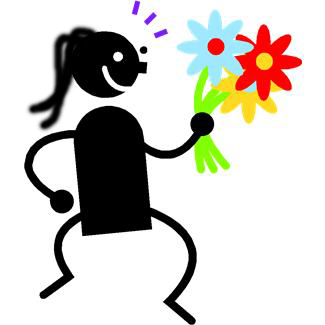

 By Diane Gold
By Diane Gold
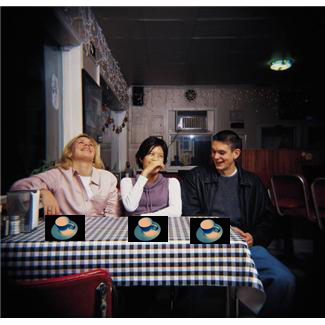 • Caffeine in tea speeds the metabolism. Theanine, another antioxidant present, has a relaxing effect on the body, which counteracts the caffeine. Therefore, the stimulant effect of caffeine is mild or not noticeable to most, yet, it increases metabolism, which is great for weight loss.
• Caffeine in tea speeds the metabolism. Theanine, another antioxidant present, has a relaxing effect on the body, which counteracts the caffeine. Therefore, the stimulant effect of caffeine is mild or not noticeable to most, yet, it increases metabolism, which is great for weight loss.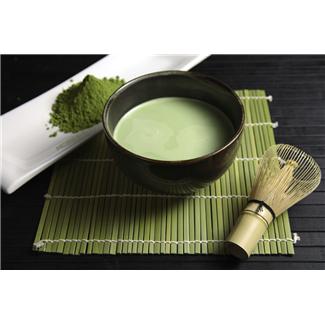 CONCLUSION
CONCLUSION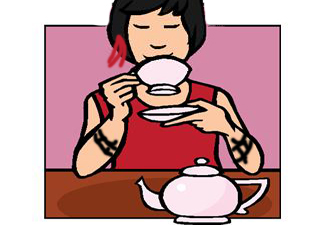 ACTION STEPS FOR TEENS
ACTION STEPS FOR TEENS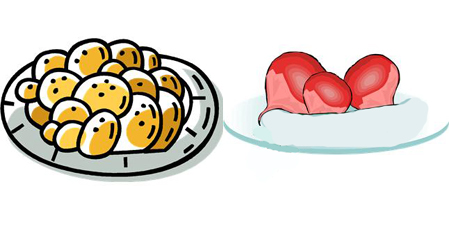 Using previous research, Mark created two groups of undergrad students from Case Western. After skipping a meal, they were asked to sit down. 2 bowls were placed in front of each participant: one with cookies, one with radishes. Students were each given an assignment: to eat only 1 particular food.
Using previous research, Mark created two groups of undergrad students from Case Western. After skipping a meal, they were asked to sit down. 2 bowls were placed in front of each participant: one with cookies, one with radishes. Students were each given an assignment: to eat only 1 particular food.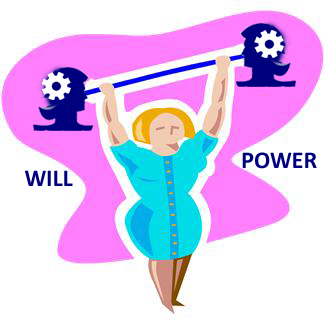 “Will power isn’t just a skill. It’s a muscle, like the muscles in your arms or legs, and it gets tired as it works harder, so there’s less power left over for other things.”
“Will power isn’t just a skill. It’s a muscle, like the muscles in your arms or legs, and it gets tired as it works harder, so there’s less power left over for other things.”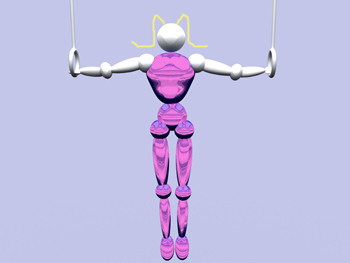 Whether we are as disciplined as my loveable, meticulous
Whether we are as disciplined as my loveable, meticulous  accountant, Charlie, or are as free as the spirit of the Flower Child Generation, we always come across choices that involve our ability to manipulate our decision making process. I use the word “manipulate” because, often, we have to mold our decisions through debating what we want the outcome to be.
accountant, Charlie, or are as free as the spirit of the Flower Child Generation, we always come across choices that involve our ability to manipulate our decision making process. I use the word “manipulate” because, often, we have to mold our decisions through debating what we want the outcome to be.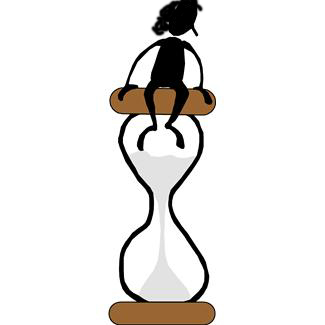 For most of us, we begin to learn what will power is when our parents say no to our demands, and we have to slowly temper ourselves or stop crying from frustration or, in some cases, learn to tow the line to avoid physical punishment from our parents. Those parents who use a lot of corporal action on their young usually have issues with will power themselves.
For most of us, we begin to learn what will power is when our parents say no to our demands, and we have to slowly temper ourselves or stop crying from frustration or, in some cases, learn to tow the line to avoid physical punishment from our parents. Those parents who use a lot of corporal action on their young usually have issues with will power themselves.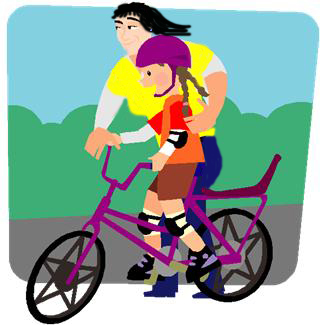 If we have family support, this process may or may not be easier. Yes, we will learn to ride our bike with less frustration, but we may use less will because we have more nurturing and soothing from family. Everyone is different, so we never know which combination of factors areis going to produce what reactions in us. We are all complex.
If we have family support, this process may or may not be easier. Yes, we will learn to ride our bike with less frustration, but we may use less will because we have more nurturing and soothing from family. Everyone is different, so we never know which combination of factors areis going to produce what reactions in us. We are all complex.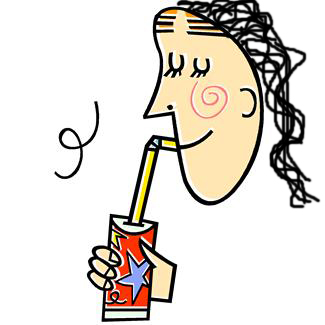 A study, published on Sept. 22, 2012 in the New England Journal of Medicine, looked at reducing the sugary drinks that teens drank for a year, using 224 teens. The study delivered non-caloric drinks to the homes of one-half of this teen group for a year, supplied coaching calls to parents, check-in visits and messaging with the participants. The other half just drank their sugary drinks, as usual.
A study, published on Sept. 22, 2012 in the New England Journal of Medicine, looked at reducing the sugary drinks that teens drank for a year, using 224 teens. The study delivered non-caloric drinks to the homes of one-half of this teen group for a year, supplied coaching calls to parents, check-in visits and messaging with the participants. The other half just drank their sugary drinks, as usual.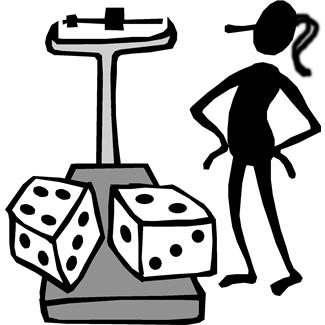
 Take away something without replacing it with something else in our lives and a gaping hole exists. To remove sugary drinks, we need to put something else there that will offer a reward of some kind. Otherwise, the emptiness becomes very uncomfortable.
Take away something without replacing it with something else in our lives and a gaping hole exists. To remove sugary drinks, we need to put something else there that will offer a reward of some kind. Otherwise, the emptiness becomes very uncomfortable. How much nicer it is when the hole is filled with something meaningful, like water for a refreshing swim, symbolic of water to drink.
How much nicer it is when the hole is filled with something meaningful, like water for a refreshing swim, symbolic of water to drink.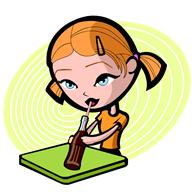 2) Are we craving drinking sweet liquid because we enjoy the way it feels, tastes or looks?
2) Are we craving drinking sweet liquid because we enjoy the way it feels, tastes or looks?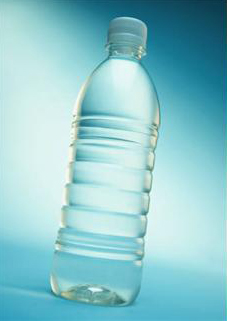 ECONOMICS
ECONOMICS
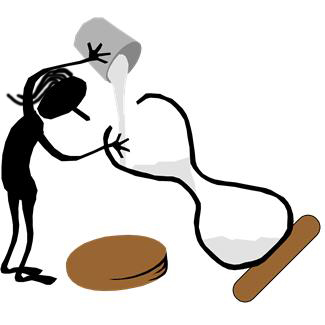 When a program talks about removing a substance or craving instead of adding pleasure with something new and awesome, whether drugs or sugary drinks, the program is talking about deprivation and pain instead of comfort and gratification. Addition instead of subtraction calms and nourish the mind; positive vs. negative speech conjures happy images. I am not saying to deny the goal or not to talk about it; but it’s more pleasurable to concentrate on adding than taking away. So why not use that tiny advantage!
When a program talks about removing a substance or craving instead of adding pleasure with something new and awesome, whether drugs or sugary drinks, the program is talking about deprivation and pain instead of comfort and gratification. Addition instead of subtraction calms and nourish the mind; positive vs. negative speech conjures happy images. I am not saying to deny the goal or not to talk about it; but it’s more pleasurable to concentrate on adding than taking away. So why not use that tiny advantage!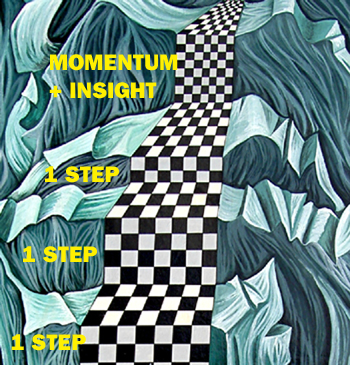 Ever think about how taking 1 step, such as developing a friendship, succeeding at doing an experiment, getting an award, creates the next step in the same direction as the first step? Each step taken creates a layer of proficiency and understanding that grows every time a new step is taken. And the momentum from the first step continues, if we put in a tiny bit of effort. This is 1-Step Education.
Ever think about how taking 1 step, such as developing a friendship, succeeding at doing an experiment, getting an award, creates the next step in the same direction as the first step? Each step taken creates a layer of proficiency and understanding that grows every time a new step is taken. And the momentum from the first step continues, if we put in a tiny bit of effort. This is 1-Step Education. tranquility, motivation, determination, excitation and filled with grateful laughter as I felt my presentation strengthen itself. I also noticed how my confidence level remained throughout the entire session and past it. I was high-fiving myself repeatedly and had more sales than usual because of the initial reactions from the early-in-the-session success.
tranquility, motivation, determination, excitation and filled with grateful laughter as I felt my presentation strengthen itself. I also noticed how my confidence level remained throughout the entire session and past it. I was high-fiving myself repeatedly and had more sales than usual because of the initial reactions from the early-in-the-session success.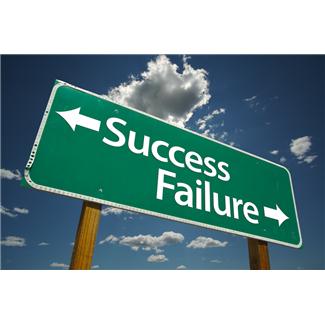 WHAT IF WE HAD EARLY CHILDHOOD LESSONS IN SUCCESS & FAILURE? WHICH WAY WOULD WE CHOOSE?
WHAT IF WE HAD EARLY CHILDHOOD LESSONS IN SUCCESS & FAILURE? WHICH WAY WOULD WE CHOOSE? Lessons in how we react to success and failure, including what to do with our strong emotions, should start early on, when we are starting to develop. They should be a requirement: regularly scheduled lessons in making good choices. After all, one lesson in how we handle success and failure could change the direction of someone’s entire life, and it could be incorporated into the values or civil duties classes that already exist.
Lessons in how we react to success and failure, including what to do with our strong emotions, should start early on, when we are starting to develop. They should be a requirement: regularly scheduled lessons in making good choices. After all, one lesson in how we handle success and failure could change the direction of someone’s entire life, and it could be incorporated into the values or civil duties classes that already exist. CONCLUSION
CONCLUSION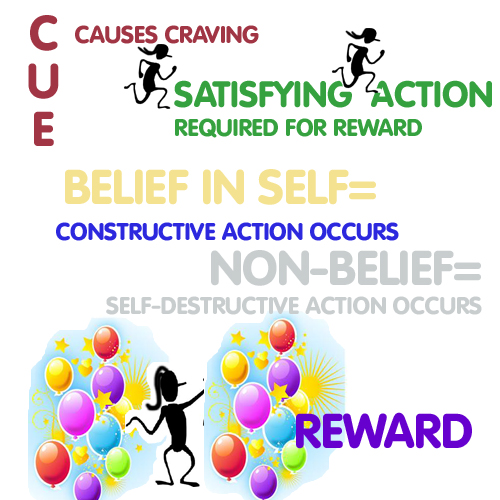
 There are so many cues that result in habitual action. Anything can set off someone who gambles to excess to create gambling by saying,
There are so many cues that result in habitual action. Anything can set off someone who gambles to excess to create gambling by saying,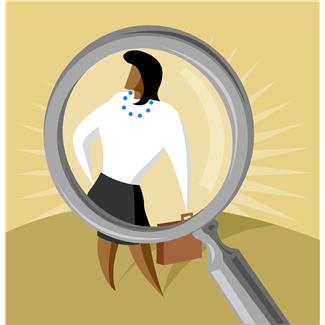 ACTION STEP
ACTION STEP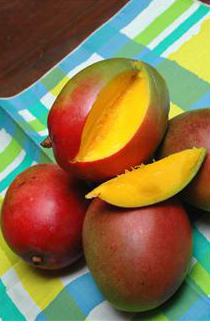 After getting poison ivy many times in New York, I thought I was free of it when I moved to Florida. Ha! Little did I know that the precious mango tree that hung over the fence was loaded with the very same toxin. Cashew and pistachio, too, but I haven’t come into contact with those.
After getting poison ivy many times in New York, I thought I was free of it when I moved to Florida. Ha! Little did I know that the precious mango tree that hung over the fence was loaded with the very same toxin. Cashew and pistachio, too, but I haven’t come into contact with those.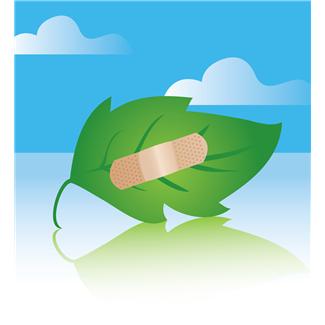 For years, I have been covering the dermatitis rash with bandages. This was for 2 reasons: 1) to keep the rash from spreading when the blisters broke and 2) to keep me from scratching it.
For years, I have been covering the dermatitis rash with bandages. This was for 2 reasons: 1) to keep the rash from spreading when the blisters broke and 2) to keep me from scratching it. The belief part of the equation comes from inside. We need to believe in ourselves to get the job done because we must be strong enough to remember our self-examination. Statistics say this is done in a group, even if it is a group of 2.
The belief part of the equation comes from inside. We need to believe in ourselves to get the job done because we must be strong enough to remember our self-examination. Statistics say this is done in a group, even if it is a group of 2. ACTION STEP
ACTION STEP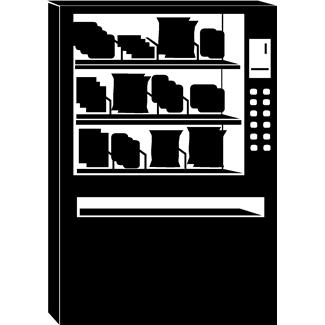 So you ‘re in school, you’ve had a pretty calm day, nobody teased you yet and you’re getting kind of hungry. You know you can step out and go to the bathroom and pass the snack machine, unless you’re in one of those states that has reduced snack machines in favor of salad bars. (I’m not knocking this; I’m for it since studies are showing that curbing the sugar foods in vending machines is helping a lot of girls with weight. It’s also teaching a better way of snacking.)
So you ‘re in school, you’ve had a pretty calm day, nobody teased you yet and you’re getting kind of hungry. You know you can step out and go to the bathroom and pass the snack machine, unless you’re in one of those states that has reduced snack machines in favor of salad bars. (I’m not knocking this; I’m for it since studies are showing that curbing the sugar foods in vending machines is helping a lot of girls with weight. It’s also teaching a better way of snacking.) ACTION STEP
ACTION STEP ACTION STEP
ACTION STEP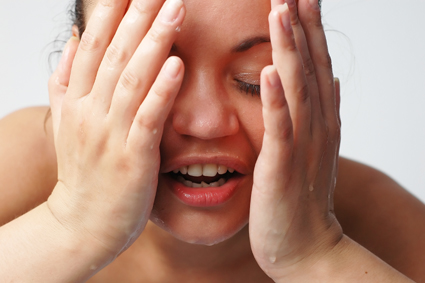 ACTION STEP
ACTION STEP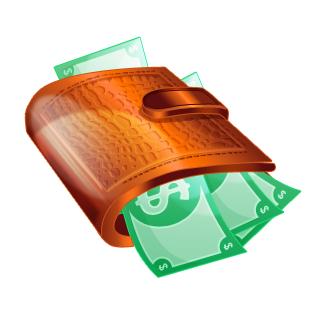 ACTION STEP
ACTION STEP





